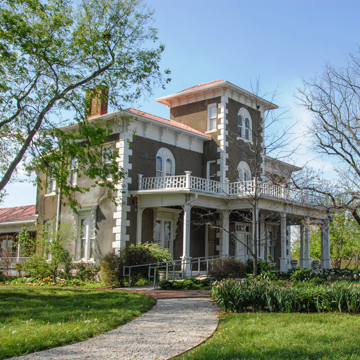This two-story brick Italian Villa–style house with a three-story dominant central tower is located on what was originally a 180-acre tobacco and cotton farm. Samuel Peel later converted the farm into a 100-acre apple orchard, one of the earliest examples of this new horticultural venture in northwest Arkansas. Peel practiced law and was the first native-born Arkansan to be elected to the U.S. Congress, where he served as chairman of the Committee on Indian Affairs. In his late career he organized and presided over the first State Bank of Bentonville and served as a legal representative for tribes in nearby Indian Territory (Oklahoma), often receiving Indian delegations on this estate. In a renovation of the house in 1918 the red brick exterior was covered with Portland cement.
For most of the twentieth century the house had several owners, but in the late 1970s, the house, by then dilapidated, was rehabilitated by its new owners. In 1992, the newly formed Peel House Foundation acquired the house, continued the restoration, and furnished it for its present role as a house museum. The grounds have been landscaped to display flowering and ornamental shrubs indigenous to the region. An antebellum log house was moved from its Benton County site to the rear of the house as a visitor center and gift shop, adding a second element of regional history to the site.


